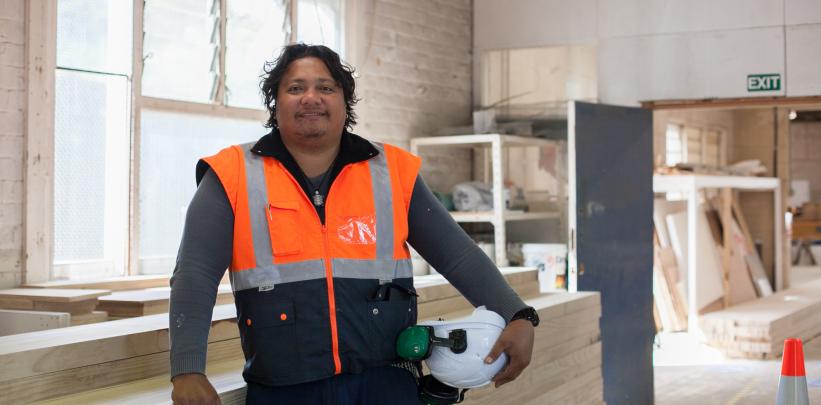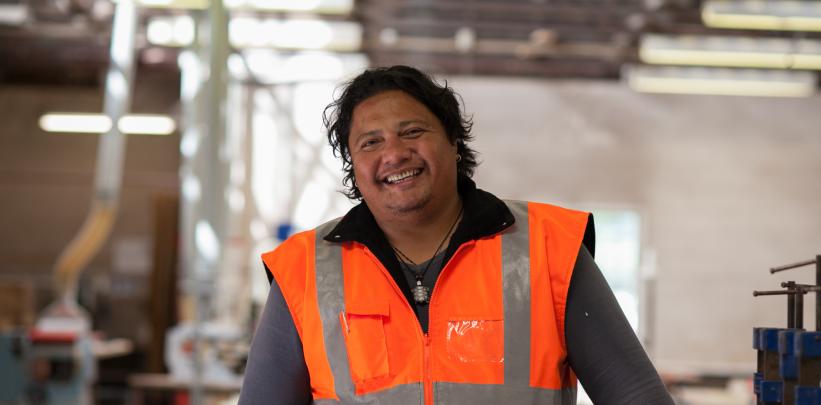Inside Story: Sculpture On The Gulf
Fritz Gabriel has recently finished his first year of a Carpentry certificate and is one of several Unitec students who will be building an elaborate entrance pavilion for the Sculpture on the Gulf event in 2017.
Fritz Gabriel has recently finished his first year of a Carpentry certificate and is one of several Unitec students who will be building an elaborate entrance pavilion for the Sculpture on the Gulf event in 2017.
“We’re dealing with wood all day, but this offers a chance to try a new way of building, one that is different from how you would approach a house,” he says. “We’re building with different angles, using more angles, and creating a spiral shape. It’s a chance to practice our skills, put them into practice, and alongside architecture students.”
The pavilion was designed by Stephens Lawson Architects, but will be built by Unitec students from Architecture, Construction and Engineering. For some the work will go towards course credits. For others it’s a paid activity that will give students a chance to practice what they’ve learned in the classroom in the real world.
Rohini Contractor, in her final year of a Bachelor of Architectural Studies is helping coordinate construction of the pavilion, and says working with construction and engineering students is a valuable experience. “We’re all working on the same project, but people with different skills and experiences, which allows us to learn so much and feed off each other,” she says.
Students have also needed to get used to using Computer Numeric Control (CNC) machinery, which involves the use of computers to control machine tools and cut materials in a very precise way. “We needed to model the building on a computer, take that 3D model, and then programme that into the CNC machine,” says Rohini.
Fritz welcomes the chance to work with such machinery. “We know how to swing a hammer, but we’re moving into a new generation of technology, so it’s important to get an experience like this. It’s a pretty challenging construction. We’ll need to use a number of special tools so, it important to get exposure to this kind of project. And it’s all part of the give and take.”
Projects such as this allow students to learn about the practice of architecture, construction and engineering, and how the different disciplines play out in real life, says Yusef Patel, lecturer in Architecture and Planning. “How to talk to manufacturers, how things need to be specified, that everything has a cost. It teaches students how to deal with stress, the downsides, which helps them grow. They’ll learn about site, that there are forces such as wind to deal with, and how real materials respond to them. “Architecture students get to interact with the people who are building it and vice versa, which builds respect, trust and understanding between disciplines. These are all experiences that students don’t often get."
Between now and mid-December the students will build the entire 16-metre long structure, to make sure that it comes together as intended. The final structure is set to be made up of 900 lineal metres of glulam wood, with 1500 bolts and 3000 washers holding it together. It will then be dismantled, packed into shipping containers and taken to Waiheke Island, where the students will build it in situ.
The entranceway structure will form part of a gallery and entertainment area near Matiatia wharf for the duration of the three-week Sculpture on the Gulf. More details about the event can be found here.

